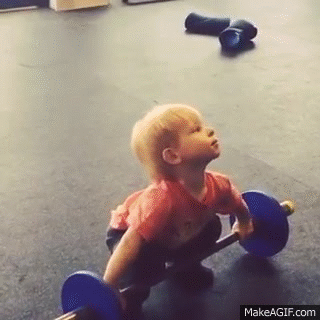Conditioning for Dragon Boating
Good job everyone for this past weekend! What a way to start the season with OC2 time trials. Your workouts on and off the water are paying off, and it shows! You can always trust your conditioning. It's what we rely on to get us through all types of sports....'true that!' Still not convinced? Let's break it down, shall we?
In this case, we're conditioning for dragon boating. Paddling a dragon boat doesn't seem too difficult on the surface for most. How simple is it? Here’s a start, you dip the wide end of the paddle into the water and pull - what is so difficult about that? You can say that about many sports: what’s so difficult about running, cycling or any other sport, for example? The simplicity of many sports masks the amount of total body conditioning that is required for an athlete to be competitive.
In this case, we're conditioning for dragon boating. Paddling a dragon boat doesn't seem too difficult on the surface for most. How simple is it? Here’s a start, you dip the wide end of the paddle into the water and pull - what is so difficult about that? You can say that about many sports: what’s so difficult about running, cycling or any other sport, for example? The simplicity of many sports masks the amount of total body conditioning that is required for an athlete to be competitive.
Speed is acquired through both strength and endurance. The explosive power you need in a race comes from having strong muscles and well-conditioned lungs. A properly conditioned body is also the best defense against injuries. Here's some guidelines in preparing for this type of sport. Will you be ready for the next OC2 test or even a big tournament? We know you will.
I. Stretching:
First and foremost, stretching
should be done prior to and after cardio and strength training exercises to
avoid muscle cramps and injuries. More advanced forms of stretching, such as
Pilates and Yoga, are great for improving flexibility and could be done on a
day when you are neither strength training nor doing any cardio exercises. This is a must during our warm ups before
hitting the water or even the gym/ track.
II. Cardiovascular
Exercises:
Many people like alternating two or
more types of cardiovascular exercises. There’s a wide range of possibilities:
cycling or stationary biking, jogging or running, and swimming.
Running is an effective cardio
exercise. No equipment needed other than a good pair of running shoes. However, there are important pre-requisites to be a runner: good knees,
good ankles, strong bones and a healthy heart. But for some, running
can be a risky activity if overweight or have osteoporosis. Running can
also be substituted by stationary bike rides and/or an elliptical machine.
For an advanced running exercise,
there is a routine called ‘interval training’.
After warming up, run and gradually increase your speed to
near-sprinting. Sustain the high speed as long as you can. When you could no
longer sustain the speed, drop the intensity immediately to a slow jog for
about half a lap or 200 meters. (If you are doing this for the first time, you
might substitute slow jogging with power walking). This is your "recovery
period". Then start running to a near sprinting speed again. Alternate the
fast and the slow phases for a total distance the same as you would run
in continuous training. The concept of interval training can be applied to many
other cardiovascular exercises such as biking, swimming, stair master,
elliptical machine. Come out to our SDWW in Long Beach for a great pERG workout at the Gabe's this season. Ask any of the coaches (coaches@spacedragons.org) and get signed up now!
It’s the more important part
of physical conditioning for many reasons.
Here’s a couple:
·
Performing cardiovascular exercises
regularly without the support of strong muscles can cause injuries easily.
·
You need to build muscles to keep
your metabolism fast.
Strength training can be
accomplished by using free weights (dumbbells or barbells), weight machines,
resistance bands and your natural body weight (calisthenics). We recommend
dumbbells, resistance bands and calisthenics because they’re versatile and don’t
require a gym membership. Need more? Try connecting to our Facebook fitness group, Space Camp. But if you do have
a gym membership, take advantage of it because the gym is a place where you can
also ask many of the trainers there for great ideas and tips. They’ll be more than happy to assist I'm sure.
I'll explain. Typically, strength training is done in a
routine basically like this: 2-3 exercises per muscle group, 3 sets per
exercise and 10 reps per set (depending on your strength tolerance). Inhale in the starting position and then exhale while you
exert yourself. Whether you
are using free weights, resistance bands or machines, you should increase the weight or resistance level by
small increment once you no longer feel the resistance.
Instead of increasing the weight or resistance, some people find it easier to
increase the number of reps – DON’T! By increasing the number of reps for an
exercise without feeling the resistance will increase your chances of an injury
by wearing out your joints (*ahem – like us Masters, exception to coach Rodimus ,<3). However,
if you train a few times a week, increasing the weight or resistance by a small
increment each week is the most effective way to boost your muscle strength.
If you haven’t worked
out in a while, expect some muscle soreness
after strength training. It’s a lingering sensation, which usually starts a few
hours to a day after your training and is distinctly different from the sharp
pain in a sport injury. The soreness comes from muscle tissues breaking down
and reconstituting after the workout - a necessary process for the muscles to
become strong and toned. Resting adequately and eating properly help speed the
recovery process and in turn which helps eliminate the soreness.
Here's a starting point. Below
are the muscle groups involved in dragon boat racing and some suggested (basic)
conditioning exercises. Note: Not all of
these exercises may pertain to your specific regimen, but does help those
individuals looking to improve their strength who are not too familiar.
*Remember to always….HYDRATE, HYDRATE, HYDRATE, before, during and after! (As if us coaches don’t stress that enough)
Primary
Muscle Groups
|
Free
Weight Exercises
|
Calisthenics
|
Back
|
||
Shoulders
|
||
Abdominals
|
Sit-ups, mason twist/rotation, all
forms of crunches
|
|
Hips
|
Sit-ups, Leg lifts
|
|
Legs
|
Lunge
|
|
Chest
|
Push-ups
|
|
Secondary Muscle Groups
|
||
Biceps
|
||
Triceps
|
Push-ups, Dips
|
|
Neck & Trapezius
|
Neck rotation
|
If 15-30 minutes a day or every
other day is all you have for exercising, allocate your time mostly to
weight-lifting and focus on the major muscles: back, shoulders, abs, and legs.
Work on one or two muscle groups per day. Do cardio once or twice a week.
For each cardio session, spend 5 minutes on warm-up, 5-7 minutes on high
intensity training (e.g. sprinting) and then 3-5 minutes cooling down.
We understand that people who have
to juggle life, school, a full-time job with irregular hours or extensive
travel requirements might find it impossible to have a structured workout plan.
However, try to find it within yourselves to take time from a multitude of
daily obligations and get in a workout.
You’ll never regret it. The key success factor to staying fit is being able to
adapt and improvise.
A reality check: You won't be as
strong as a person who has a workout routine throughout the week but your body
will still be better conditioned if you do something than if you do nothing at
all. Feel free to inquire with any of
the coaches and those individuals with experienced strength training. We have lots of them on the team. So get ready for a great 2020 paddling season! Space Dragon strong! Let’s do this!!

Your friendly, fun-loving and
whip-cracking coaches!
Esmer (team Braddah)



